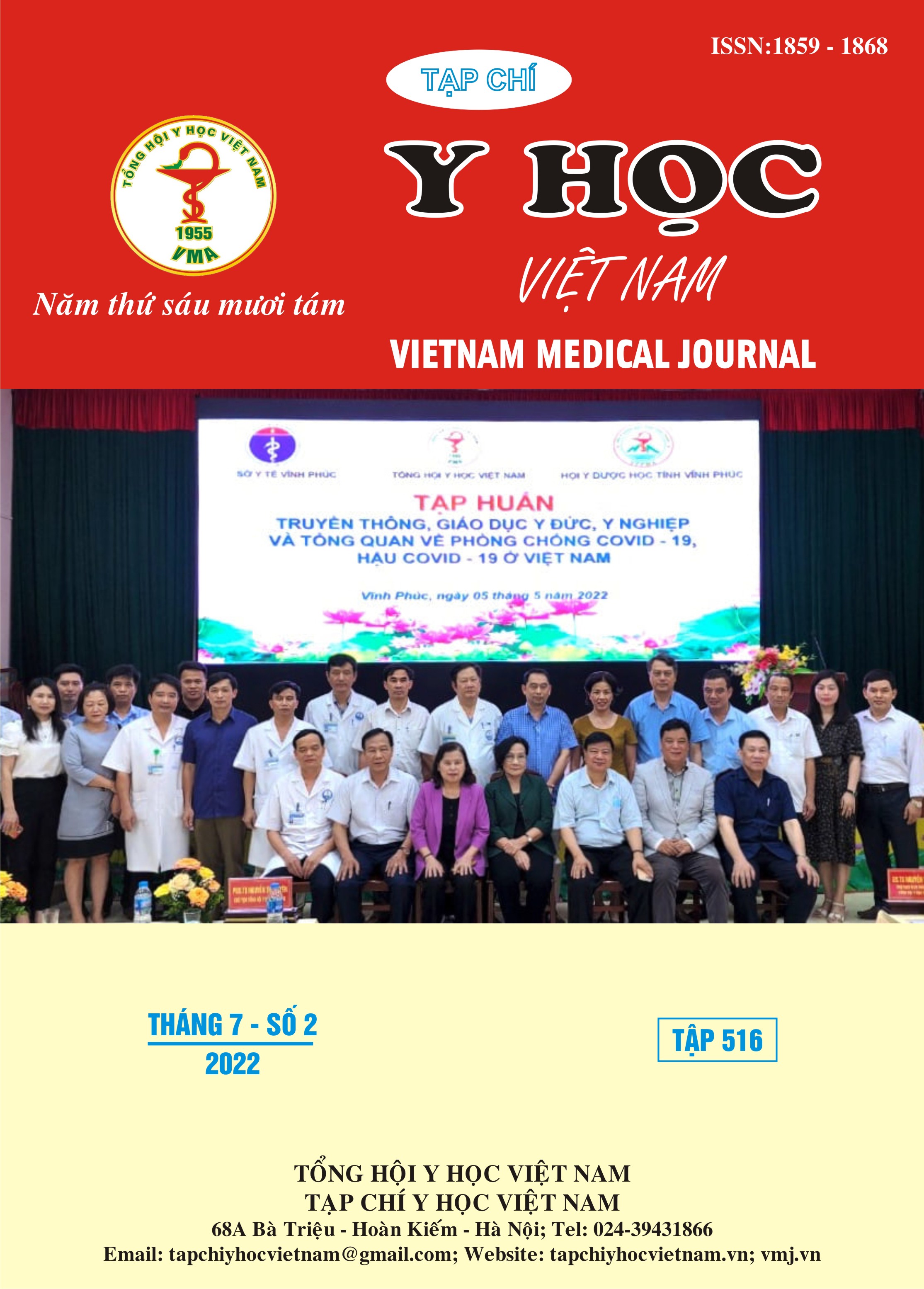INVESTIGATING PREOPERATIVE CLINICAL AND LABORATORY CHARACTERISTICS OF PATIENTS WHO UNDERWENT AORTIC VALVE REPLACEMENT WITH THE FREEDOM SOLO - A STENTLESS BIOPROTHESIS VALVE
Main Article Content
Abstract
Objectives: To investigate preoperative clinical and laboratory characteristics of patients who underwent aortic valve replacement with the Freedom Solo – a stentless bioprosthesis valve. Subjects and methods: This prospective study was carried out on 53 patients who underwent aortic valve replacement with Freedom Solo valve at Bach Mai Hospital, Ha Noi from January 2016 to May 2022. Results: The mean age was 62.8 ± 6.1 years old, and 67.9% were men. The main clinical symptom was chest pain (60.4%), and syncope appeared in 9.4% of patients. Heart failure classification according to NYHA preoperatively, most of them belonged to the NYHA II group (73.6%) and NYHA III group (22.6%); The most common comorbidities were hypertension (39.6%), type II diabetes (5.7%) and previously cerebrovascular accident (3.8%). Laboratory tests: 17% of patients with mild to moderate anemia; 5.7% of patients had atrial fibrillation before surgery. Echocardiography showed that the lesion morphology was mainly severe stenosis and regurgitation (83%); severe left ventricular hypertrophy with an average left ventricular mass index of 167.8 ± 59.6 g/m2; the mean trans aortic valve pressure was high (49.6 ± 25.4 mmHg). 20.8% of the study patients had a moderate decrease in left ventricular ejection fraction before surgery (30% < LVEF < 50%). Conclusions: Patients with aortic valve disease who were undergoing Freedom Solo bioprosthetic valve replacement often presented to the hospital with symptoms and severe left ventricular hypertrophy.
Article Details
Keywords
Aortic valve, aortic valve replacement with bioprosthesis, the Freedom Solo valve
References
2. Wollersheim L.W., Li W.W., Bouma B.J., et al. (2015). Aortic Valve Replacement With the Stentless Freedom SOLO Bioprosthesis: A Systematic Review. The Annals of Thoracic Surgery, 100, 1496–1504.
3. Nishimura R.A., Otto C.M., Bonow R.O., et al. (2014). 2014 AHA/ACC guideline for the management of patients with valvular heart disease : A report of the american college of cardiology/american heart association task force on practice guidelines. Circulation, 129(23).
4. Andrade M., Saraiva F., Amorim M.J., et al. (2018). Hemodynamic and clinical performance of Solo stentless bioprosthetic aortic valves. Revista Portuguesa de Cardiologia, 37(10), 811–818.
5. Fleerakkers J., Schepens M., Ranschaert W., et al. (2018). Aortic valve replacement using the Freedom SOLO stentless bioprosthesis: Clinical and haemodynamic performance in 625 patients at medium-term follow-up. European Journal of Cardio-thoracic Surgery, 54(6), 1073–1080.
6. Otto C.M., Nishimura R.A., Bonow R.O., et al. (2021). 2020 ACC/AHA Guideline for the Management of Patients With Valvular Heart Disease: A Report of the American College of Cardiology/American Heart Association Joint Committee on Clinical Practice Guidelines. Circulation, E72–E227.
7. Guglielmo S., Fabrizio P., Andrea M., et al. (2018). Evaluation of Hemodynamic Behavior of a Stentless Aortic Bioprosthesis under Stress by Exercise Echocardiography. International Journal of Clinical Cardiology, 5(4).
8. Hegazy Y.Y., Rayan A., Bauer S., et al. (2018). Current indications for stentless aortic bioprostheses. Asian Cardiovasc Thorac Ann, 26(1), 19–27.


